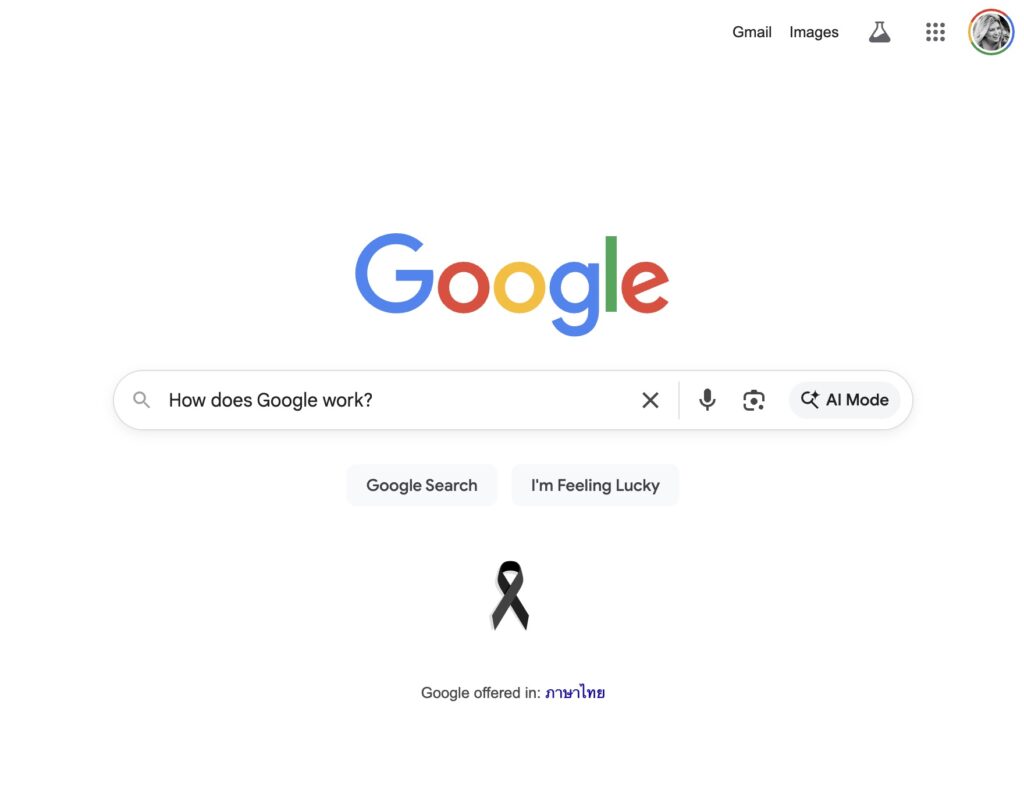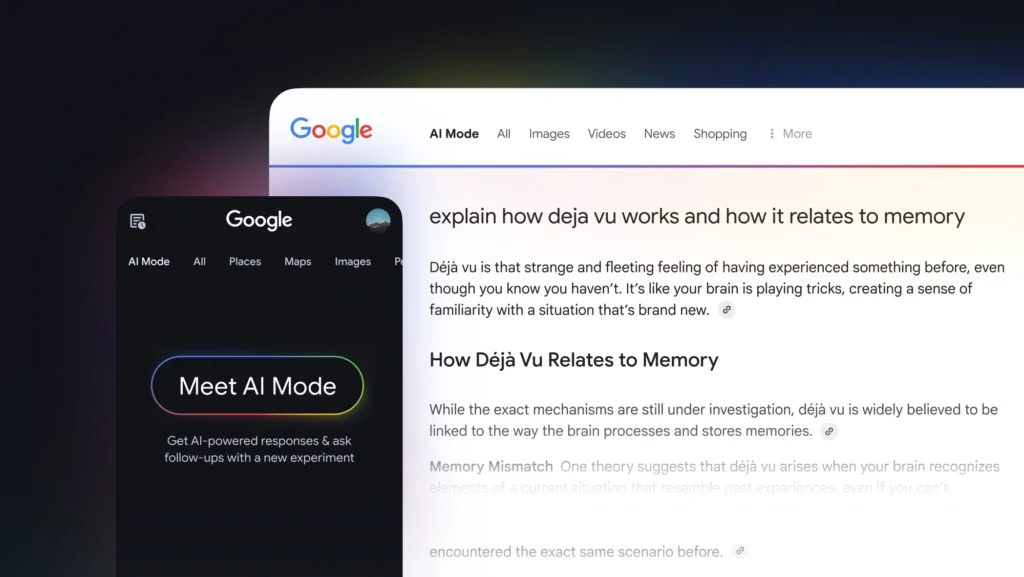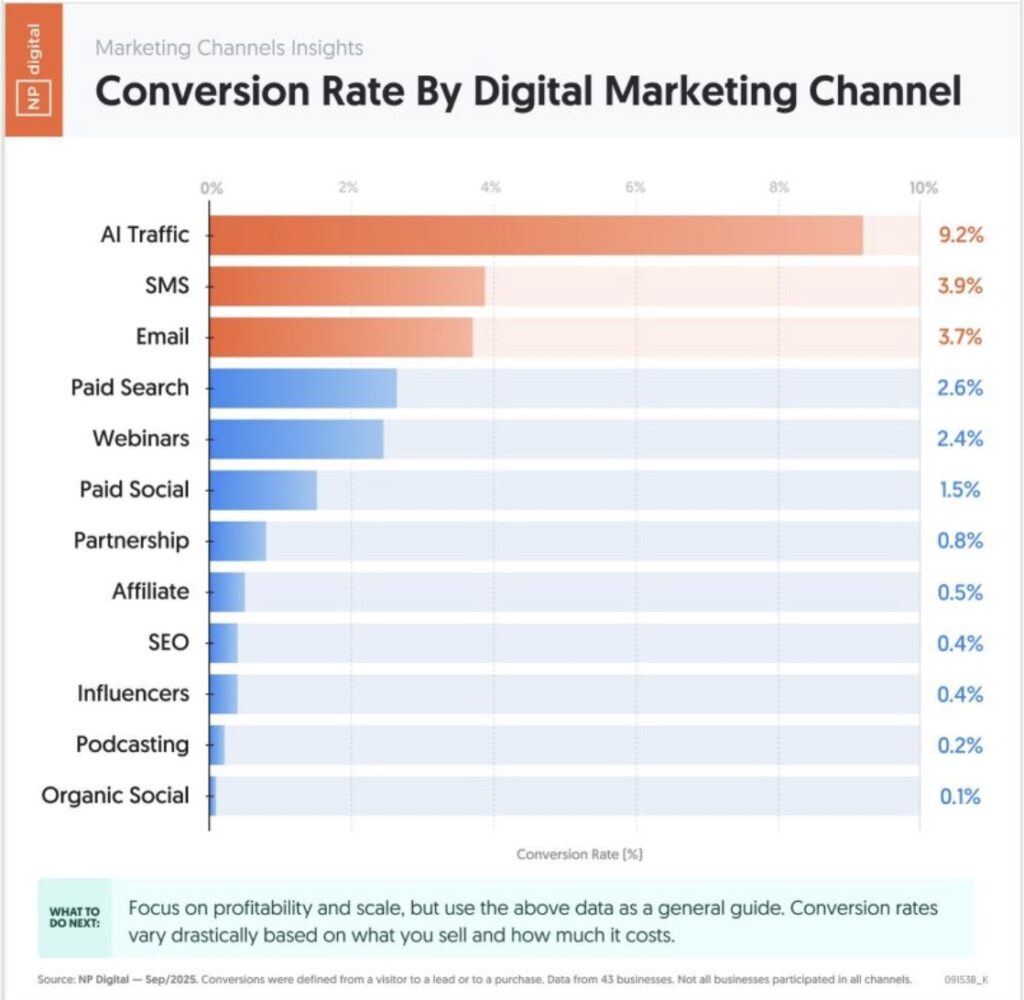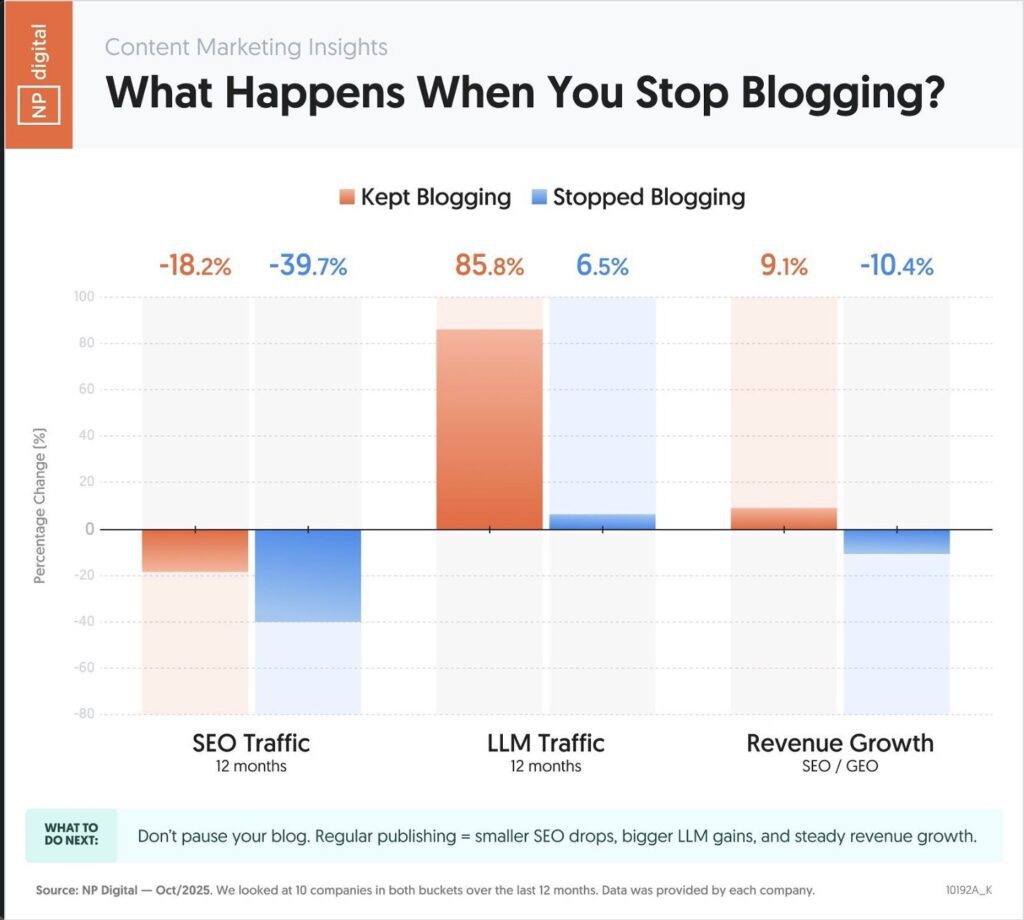TL;DR — Start Prioritising AI Search
Google Search has changed.
Google and other AI tools like ChatGPT aren’t just showing search results anymore, that you have to click on and read through. Instead Google is analysing intent, comparing sources, and recommending what they trust. So instead of many people getting served the same results, they are tailored to the user. Meaning that different people will get different results. Aka there are now more winners with it comes to SEO and AI search results.
Important to know:
- AI Traffic converts higher than any other channel.
- Your website needs to be technically optimised and clearly structured, or it won’t show up
- You need middle and bottom of the funnel content — guides, comparisons, and individual service pages.
People now discover and research brands through AI Overviews, summaries, and conversations, long before they ever visit a website.
By the time they land on yours, they’re already ready to buy, which is why traffic is dropping but conversion is growing.
So your job isn’t just to rank.
It’s to be referenced, recognised, and recommended.
If you want to make sure your Showit website is AI-ready, grab my free guide:
👉 How to Make Your Showit Website Show Up in ChatGPT (4 Easy Fixes)
Introduction – Google Search has Changed
You might think Google search works the same way it always has.
Type something in, hit enter, scroll through results.
But behind the scenes, it’s changed dramatically. The new Google doesn’t just find answers, it understands your intent, your timing, and even what kind of buyer you might be.

How Google Used to Work
Not that long ago, Google was ‘pretty’ simple. You’d type in a keyword, hit enter, and everyone in the same location would see more or less the same results.
If you searched “best laptop,” Google would scan its index for pages that matched those exact words. Whoever had the right mix of keywords, backlinks, and authority usually won the top spot.
It didn’t really matter who was searching or why. The algorithm was built to match words, not people.
So a student trying to save money, a video editor chasing performance, and a grandparent looking for something easy to use would all see nearly identical search results.
That old version of Google was powerful for its time, but it treated every search like a one-size-fits-all question.
It understood what you were asking, but not who was asking — and that’s exactly what’s changing now

Google’s New Way of Searching
Google doesn’t just “search” anymore — it thinks.
According to Google’s announcements, the search engine now runs multiple searches at once, a process it calls “query fan-out.” Instead of pulling results from one data set, it fires off several searches from different angles, compares them, and then pieces together the best possible summary right on the results page.
These summaries are called AI Overviews, powered by Google’s Gemini model. In Google’s own words, this helps you “get to the gist of a complicated topic more quickly.”
So when someone searches “how to choose the best laptop,” Google doesn’t just list ten blue links anymore. It analyses intent and context to decide what information actually matters most for that person.
- Are they a student on a budget?
- A video editor chasing speed?
- A grandparent who values simplicity?
Each one will see a different set of insights, comparisons, and recommendations — because each has a different goal.
Old Google treated them the same.
New Google doesn’t.
This shift is what makes today’s search feel so much more personal. It’s not just predicting what you’re looking for, it’s understanding why you’re looking and showing the answer before you even know exactly how to ask.

Why you Need to be Focusing on AI Traffic
If your website traffic has dipped recently in the past year, don’t stress, it might actually be a good thing.
Neil Patel’s team at NP Digital studied 48 websites to understand how Google’s new AI Overviews are changing the search landscape. What they found was pretty wild: Organic traffic dropped 7.4% in 2024 and 13.3% in 2025 after AI Overviews rolled out.
But here’s the twist! While website visits dropped, search-driven revenue actually went up, climbing from 12.1% in 2023 to 20.6% in 2025.
That means fewer clicks, but far better customers.
Why? Well, Google’s new AI system is filtering people as they search, gathering context, comparing answers, and surfacing the most relevant brands before anyone even clicks.
So by the time someone reaches your website, they’re already warmed up. They’ve seen your business mentioned or recommended in an AI Overview, and they’ve moved further down the funnel before they even arrive.
In short, old Google sent you browsers; new Google sends you buyers.
And there’s another factor at play — trust.
People trust AI far more than they realise. Even though AI isn’t always correct, users believe what it says. Many treat it like a friend, therapist, or even a digital advisor. So when AI recommends a brand or mentions a website by name, people naturally see it as more credible.
P.S. It’s not just Google AI Overviews doing the influencing. It’s all large language models (LLMs) — and ChatGPT, the most widely used of them all, is leading the way.
AI results has become the modern version of word-of-mouth. Only this time, the “friend” making the recommendation is Google’s AI.
That’s why appearing in AI Overviews is so powerful: it’s not just visibility, it’s pre-sold trust.
What This Means for SEO (and How to Stay Visible in AI Overviews)
The rules of SEO are changing fast. It’s no longer enough to chase keywords and backlinks — you now need to make your content useful, trustworthy, and AI-friendly.
AI Overviews, ChatGPT, and other large language models (LLMs) aren’t pulling random data from the web. They’re scanning for clear, credible, and well-structured answers that solve a user’s problem. So the question becomes: is your content ready to be quoted by AI?
What you need to do to appear in AI searches.
1. You Need to be Blogging
If there was ever a time to double down on blogging, it’s now. AI Overviews and LLMs like ChatGPT don’t just pull content from your homepage — they pull from your blogs and service pages.
When someone asks, “What’s the best Showit SEO service?” or “Which website designer should I hire?”, these tools look for articles that clearly explain, compare, and recommend. If you’re not creating that kind of content, you’re invisible.
And here’s the proof.
Neil Patel’s team at NP Digital recently studied what happens when businesses stop blogging — and the results were dramatic:
| Metric | Kept Blogging | Stopped Blogging |
|---|---|---|
| SEO Traffic (12 months) | -18.2% | -39.7% |
| LLM Traffic (12 months) | +85.8% | +6.5% |
| Revenue Growth | +9.1% | -10.4% |
In short:
🧠 Brands that kept blogging saw huge growth in AI (LLM) visibility and continued revenue gains.
📉 Those that stopped saw steep drops in SEO and even negative revenue growth.
So yes! Blogging is still one of the best things you can do for SEO, but now it’s also key to being seen in AI.
Middle of the Funnel Content: Educate and Compare
Write content that helps potential clients make a decision.
Think:
- Buying guides — “How to Choose the Right Showit SEO Package”
- Comparison posts — “Showit SEO Intensive vs Monthly SEO: Which Is Better for You?”
- Top 10 lists — “Top 10 Showit Designers to Watch This Year”
This builds trust, improves discoverability, and gives AI more context about your niche expertise.
Bottom of the Funnel Content: Convert and Close
When someone’s ready to buy, make it easy.
That means:
- Dedicated service pages — one clear page per offer.
- Transactional language — “hire,” “book,” “get started,” “pricing.”
- Case studies — real examples that prove credibility.
Remember, SEO now extends beyond Google’s results page. You’re not just writing for search engines — you’re writing for AI systems that decide which brands to recommend.
The new goal isn’t just to rank — it’s to be referenced.

2. Your Website Needs to Be Optimised
The technical side of your site matters more than ever.
Google’s own documentation says:
“You can apply the same foundational SEO best practices for AI features as you do for Google Search overall: making sure the page meets the technical requirements for Google Search, following Search policies, and focusing on key best practices, such as creating helpful, reliable, people-first content.” — Google Search Central
To be eligible to appear as a supporting link in AI Overviews or AI Mode, your page must:
- Be indexed by Google
- Meet all standard Search technical requirements
If your site isn’t properly optimised, Google and other AI systems simply can’t understand or trust it enough to include it.
You also need to put a large focus on your on-page SEO. That means you need individual service pages for every service or product you offer. One catch-all “Services” page won’t cut it. Each page should be focused, keyword-rich, and designed to help AI (and humans) understand exactly what you do.
If you need help with that, check out our Services page — it’s what we do best.
Case Study: When AI Gets It Wrong
I recently worked with a client who sells a wellness product. When I asked ChatGPT about her brand, every single detail it gave me was wrong.
(And yes — ChatGPT will happily make up information if it can’t find anything accurate. It’s very annoying, and exactly why you should fact-check everything.)
So we got to work optimising her website, adding detailed product descriptions, factual brand information, and structured content that AI could easily read. Within weeks, ChatGPT started referencing the correct details.
That’s the difference between being invisible and being trusted by AI.
A Quick Reality Check
If you think your website is already optimised because your designer said they “did your SEO,” I have bad news… They probably didn’t.
Most website designers only do a few things like add titles and meta descriptions, which do next to nothing for real SEO.
That’s like hiring a painter and expecting them to rewire your house.
You’ll get fresh walls, but your lights still won’t turn on.
If you’re not sure where your website stands, request a free video audit and I’ll show you exactly what’s working, what’s not, and what to fix first.
